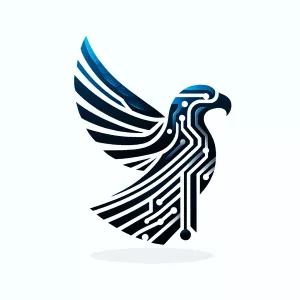- within Technology topic(s)
- with readers working within the Banking & Credit and Securities & Investment industries
- in European Union
- in European Union
- with readers working within the Aerospace & Defence, Chemicals and Media & Information industries
- within Technology, Tax and Finance and Banking topic(s)
Key Takeaways:
- The SEC's Division of Corporation Finance issued a Statement on Proof-of-Work (PoW) Mining, opining that certain mining activities do not constitute securities transactions.
- The Statement applies to self-mining and mining pools, affirming that rewards earned from PoW mining are not subject to SEC securities registration requirements.
- The Howey Test was used to assess whether mining activities qualify as investment contracts, with the Division determining that mining rewards stem from miners' own efforts, not third-party managerial efforts.
- The Statement does not address Proof-of-Stake (PoS) validation, leaving regulatory questions open for other consensus mechanisms.
- This Statement is not a formal SEC rule or regulation, meaning the SEC or other regulators may adopt a different stance in the future. The legal clarity that this Statement seems to provide remains murky.
The Securities and Exchange Commission ("SEC") is one of the federal regulators in the Unites States of America ("USA") that oversees crypto-assets. Historically, the SEC has done so by extending federal securities laws to crypto-assets on a case-by-case basis due to the lack of an overarching legislative framework. While there have been contemporary developments in the area of crypto-asset regulation in the USA, there has been no concrete outcome to date.1
Recently, the SEC's Division of Corporation Finance ("Division") published its Statement on Certain Proof-of-Work Mining Activities ("Statement") to clarify the scope of securities laws' applicability to crypto-assets.2 Specifically, it states that certain crypto mining activities will not constitute securities offerings and are, therefore, not subject to federal securities laws. But what does this mean in effect?
A PRIMER ON CRYPTO MINING
A blockchain network envisions a decentralised system for conducting transactions without the need for an intermediary, such as a bank or governmental authority. Instead, it relies on an algorithm to verify and validate transactions through a consensus mechanism. This consensus mechanism ensures that all transactions are legitimate and that the integrity and immutability of the blockchain are maintained.
Generally, the consensus mechanism for a blockchain network follows one of two methods: Proof-of-Work ("PoW") or Proof-of-Stake ("PoS"). In a PoW network, participants verify a transaction by using their computational power to validate new transactions and add new blocks to the blockchain.3 This process is called "crypto mining."
PoW can be contrasted with PoS, another form of consensus mechanism, in which participants of the blockchain network validate transactions by staking their crypto-assets to secure the blockchain network.4 In the table below, we have summarised the key differences between the two mechanisms.
| Feature | Proof-of-Work | Proof-of-Stake |
| Mechanism | Solving cryptographic puzzles | Staking crypto-assets |
| Energy Usage | High (electricity-intensive) | Low (energy-efficient) |
| Security Model | Based on computational power | Based on the amount staked |
| Mining/Validation | Miners compete using computer hardware | Validators are chosen randomly |
| Example | Bitcoin, Litecoin, Dogecoin, Ethereum 1.0 | Cardano, Solana, Ethereum 2.0 |
WHAT DOES THE STATEMENT COVER?
The Division's Statement refers to the mining of specific crypto-assets which are intrinsically linked to the programmatic functioning of a public, permissionless network (essentially, a blockchain network), and are used to participate in the network's consensus mechanism, or to otherwise maintain the technological operation and security of the network. These crypto-assets have been designated as "Covered Crypto Assets", which miners participating in the PoW consensus mechanism can earn as rewards for validating new transactions to the network.
The Division opined in the Statement that certain mining activities related to Covered Crypto Assets on a network that functions on a PoW consensus mechanism do not amount to an offer or sale of securities under the federal securities laws. These participants would then not have to register the transactions with the SEC as it would fall within an exemption.
The Statement specifically covers the following two types of mining activities:
- Self-Mining (also known as Solo Mining): This involves a miner using their own computational resources to mine the Covered Crypto Assets, either working independently or by coordinating with others. For example, an individual miner using a high-performance GPU at home to validate transactions and receive rewards directly from the network.
- Mining Pools: This involves miners combining
their computational resources to form a shared pool, which has an
increased chance of validating transactions on the network. The
rewards from a mining pool may be distributed in one of two ways:
- Directly to the miners: Some mining pools have a reward distribution system where the miners receive payment for each valid block they contribute to the pool, or in proportion of the computational resource that they contribute to the mining pool for mining the block.
- Indirectly through a designated pool operator: Some mining pools have a reward distribution system where a pool operator is designated as the person responsible for coordinating the pooled computational resources and overseeing the pool's security measures, while ensuring that the participants of the pool are paid their rewards after deducting a fee. In such cases, the reward payouts are often distributed in proportion to the amount of computational resources contributed by the miner.
ANALYSIS OF THE DIVISION'S REASONING
The SEC has been treating crypto assets as securities by extending the definition of a "security" to include them. A "security", as per different definitions under the relevant securities legislations,5 may take the form of stocks, bonds, debentures, shares, and investment contracts, amongst others. While crypto-assets are not explicitly included in either definition, the term "investment contract" has been read broadly to include certain other arrangements and instruments that are in the nature of securities, which may include crypto-assets.
The test for assessing whether an instrument must be classified as an investment contract was laid down in SEC v W. J. Howey Co.6 According to this test, an "investment contract" means a "contract, transaction or scheme whereby a person invests his money in a common enterprise and is led to expect profits solely from the efforts of the promoter or a third party, it being immaterial whether the shares in the enterprise are evidenced by formal certificates or by nominal interests in the physical assets employed in the enterprise."7
To break this down into its components, the Howey test states that an investment contract exists if:
- There is an investment of money;
- In a common enterprise;
- With an expectation of profits; and
- Solely from the efforts of a third party.
The Division has used the Howey test and applied it to the mining of Covered Crypto-Assets in the two instances stated above (i.e., Self Mining and Mining Pool). While mining crypto-assets, the miner invests their own computational resources to validate transactions and secure the network in exchange for rewards determined per a pre-set network protocol.
The miner does not expect profits from the efforts of any third party but from their own mining efforts, which the Division has characterised as an "administrative or ministerial activity." The Covered Crypto-Assets earned as a consequence must be then, under the current interpretation, be treated by the Division as payment in exchange for the miner's service to the network, and not a securities transaction.
LEGAL IMPLICATIONS
On the face of it, the Statement is limited to PoW networks, and does not elucidate on the implications for PoS networks. Regardless, it seems like a step towards legal clarity and certainty regarding the treatment of crypto assets.
It must, however, be noted that this statement is a representation by the staff of the SEC's Division of Corporation Finance, and not a rule, regulation, guidance of statement issued by the SEC.8 It does not have the legal force that a rule issued by the SEC would have and does not create any new obligations on any parties undertaking crypto asset activities. It merely clarifies their current position, which may be subject to change if the SEC takes a differing stance, as the SEC itself has neither approved nor disapproved the Statement.
It is also not reliable to make a definitive determination regarding whether a particular mining activity would be treated as a securities transaction, as the SEC will continue to assess each mining activity on a case-by-case basis by applying the Howey test.9 As stated by the SEC's Commissioner Caroline Crenshaw in response to the Statement, we seem to be right back where we started.10
Footnotes
1 Earlier this month, we analysed proposed stablecoin regulations in the USA. See: Soham Jethani, Pankhuri Malhotra and Hena Ayisha, Stablecoin Frameworks in Queue: The US Approach to Regulating Stablecoin Issuers, TLP Advisors (Mar. 5, 2025), https://techlawpolicy.com/2025/03/stablecoin-frameworks-in-queue-the-us-approach-to-regulating-stablecoin-issuers/
2 Statement on Certain Proof-of-Work Mining Activities, Securities and Exchange Commission (Mar. 20, 2025), https://www.sec.gov/newsroom/speeches-statements/statement-certain-proof-work-mining-activities-032025#_ftnref10
3 What is proof of work? Explaining blockchain verification, Britannica, https://www.britannica.com/money/proof-of-work-blockchain-verification.
4 Proof of Work (PoW) vs. Proof of Stake (PoS): what's the difference?, Coinbase, https://www.coinbase.com/learn/crypto-basics/proof-of-work-pow-vs-proof-of-stake-pos-what-is-the-difference.
5 Section 2(a)(1) of the Securities Act of 1933, 15 U.S.C. § 77b(a)(1); Section 3(a)(10) of the Securities Exchange Act of 1934, 15 U.S.C. § 78c(a)(10).
6 Securities and Exchange Commission v W. J. Howey Co., 328 U.S. 293
7 Id, at 300.
8 Footnote 2 of the Statement on Certain Proof-of-Work Mining Activities.
9 Footnote 9 of the Statement on Certain Proof-of-Work Mining Activities
10 Caroline A. Crenshaw, Crypto Mining Statement: The Flame in Plato's Cave, Securities and Exchange Commission (Mar. 20, 2025), https://www.sec.gov/newsroom/speeches-statements/crenshaw-statement-crypto-mining-032025
The content of this article is intended to provide a general guide to the subject matter. Specialist advice should be sought about your specific circumstances.




